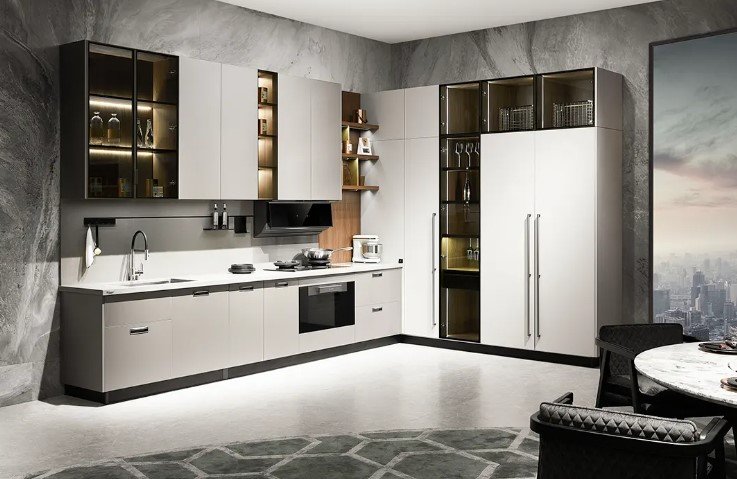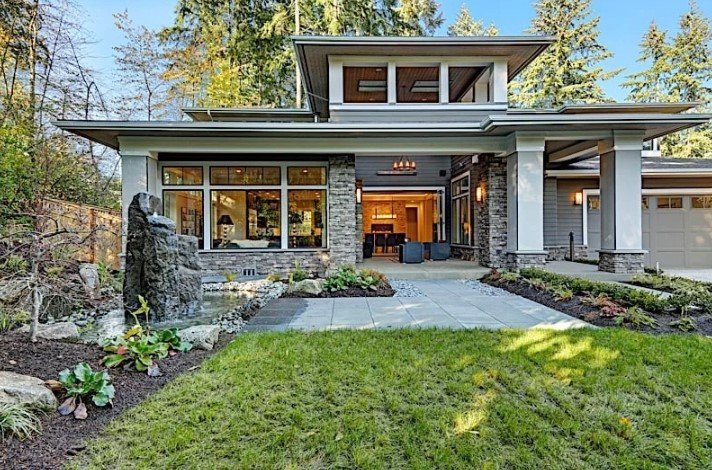
Kitchen Cabinet Design: Creating Functional and Stylish Spaces

Introduction
Welcome to the ultimate guide to kitchen cabinet design! Whether you’re renovating your existing kitchen or building a new one from scratch, the design of your kitchen cabinets plays a crucial role in both aesthetics and functionality. In this comprehensive article, we’ll delve into everything you need to know to create a stunning and practical kitchen space that reflects your style and meets your needs.
Importance of Well-Designed Kitchen Cabinets
Your kitchen cabinets are more than just storage; they’re an essential element of your kitchen’s design. Well-designed cabinets can enhance the overall look and feel of your kitchen while providing efficient storage solutions. From organizing your cookware to concealing appliances, the right cabinets can streamline your workflow and elevate your kitchen’s functionality.
Trends in Kitchen Cabinet Design
Kitchen cabinet design trends are constantly evolving, influenced by changes in lifestyle, technology, and design preferences. From sleek minimalist styles to warm and rustic aesthetics, there’s a wide range of trends to explore. Keep an eye out for innovative storage solutions, sustainable materials, and customizable features that cater to your unique needs and taste.
Factors Influencing Kitchen Cabinet Design Choices
When designing your kitchen cabinets, several factors come into play, including your budget, space constraints, and personal preferences. Consider the layout of your kitchen, the amount of storage you need, and any special features or accessories you desire. It’s essential to strike a balance between style and functionality while staying within your budget.
Planning Your Kitchen Cabinet Design
Before diving into the design process, it’s crucial to plan carefully and assess your needs and constraints.
Assessing Your Kitchen Space
Start by evaluating the size and layout of your kitchen. Take accurate measurements of the available space, including any alcoves, corners, or architectural features that may impact your cabinet design. Consider how you move around the kitchen and identify areas where additional storage or functionality is needed.
Budgeting for Kitchen Cabinets
Establishing a budget is a crucial step in the kitchen cabinet design process. Determine how much you’re willing to spend on cabinets, including materials, labor, and installation costs. Research different options and prioritize features based on your budget and requirements. Remember to factor in additional expenses, such as hardware, countertops, and lighting.
Choosing the Right Materials
The materials you choose for your kitchen cabinets will affect their durability, appearance, and cost. Common options include hardwoods like oak, maple, and cherry, as well as engineered wood, laminate, and metal. Each material has its pros and cons in terms of aesthetics, maintenance, and longevity. Consider your lifestyle, design preferences, and budget when selecting the right material for your cabinets.
Designing Custom Kitchen Cabinets
For a truly personalized kitchen, consider investing in custom cabinets tailored to your specific needs and style preferences.
Customization Options and Features
Custom cabinets offer endless possibilities for customization, allowing you to choose everything from the cabinet style and finish to the hardware and accessories. Work with a professional designer to explore different design options and incorporate features that optimize storage and functionality. From built-in organizers to hidden appliances, custom cabinets can be tailored to suit your lifestyle and workflow.
Working with a Professional Designer
While DIY cabinet installation is an option for some homeowners, working with a professional designer can streamline the process and ensure optimal results. A skilled designer can help you maximize space, optimize workflow, and create a cohesive design that reflects your taste and complements your home’s architecture. They’ll also handle technical details like measurements, materials selection, and installation logistics, saving you time and hassle in the long run.
Maximizing Storage and Functionality
Regardless of your kitchen’s size or layout, maximizing storage and functionality should be a top priority in your cabinet design. Incorporate clever storage solutions like pull-out shelves, lazy Susans, and vertical dividers to make the most of every inch of space. Consider your daily routines and cooking habits when planning the layout, ensuring that essential items are easily accessible and efficiently organized.
Installation and Maintenance Tips
Once you’ve finalized your kitchen cabinet design, it’s time to tackle the installation process and ensure proper maintenance for long-term durability.
Hiring Professionals vs. DIY Installation
Deciding whether to hire professionals or tackle the installation yourself depends on your skills, experience, and budget. While DIY installation can save money upfront, it requires careful planning, precision, and patience to ensure a professional-looking result. Hiring experienced professionals may involve additional costs but can save you time and stress while guaranteeing quality craftsmanship and installation expertise.
Tips for Proper Cabinet Maintenance
Proper maintenance is essential to prolonging the life and beauty of your kitchen cabinets. Follow manufacturer’s guidelines for cleaning and care, using gentle cleaning products and non-abrasive tools to avoid damage. Regularly inspect hinges, drawer slides, and hardware for signs of wear or damage, and address any issues promptly to prevent further damage or malfunction.
Troubleshooting Common Issues
Despite your best efforts, kitchen cabinet issues may arise over time, from loose hinges to warped doors. Learn how to troubleshoot common problems and make minor repairs yourself, saving time and money on professional services. Keep spare parts and touch-up materials on hand for quick fixes, and consult online resources or professional guides for step-by-step instructions on addressing specific issues.
FAQs about Kitchen Cabinet Design
What Are the Latest Trends in Kitchen Cabinet Design?
Stay updated on the latest trends in kitchen cabinet design, including popular
styles, materials, and color palettes. From sleek, handle-less designs to warm, natural finishes, explore options that suit your personal style and enhance your kitchen’s aesthetic appeal.
How Can I Maximize Space in a Small Kitchen with Cabinet Design?
In small kitchens, maximizing space is essential. Consider tall cabinets that reach the ceiling to utilize vertical space effectively. Incorporate pull-out shelves, corner cabinets, and organizers to make the most of every inch. Opt for light colors and reflective surfaces to create a sense of openness and brightness.
What Factors Should I Consider When Choosing Cabinet Materials?
When selecting cabinet materials, consider factors such as durability, maintenance, and aesthetics. Hardwoods like maple and cherry offer timeless beauty and durability, while engineered wood and laminate provide affordable options with excellent durability and versatility. Choose materials that align with your budget, style preferences, and maintenance requirements.
How Much Does Custom Kitchen Cabinet Design Cost?
The cost of custom kitchen cabinets varies depending on factors such as materials, design complexity, and customization options. On average, expect to pay between $500 to $1,200 per linear foot for custom cabinets, including materials and installation. However, prices can vary significantly based on your location, chosen materials, and the scope of the project.
What Are the Benefits of Hiring a Professional Designer?
Working with a professional designer offers numerous benefits, including access to expert advice, personalized design solutions, and streamlined project management. Designers can help you navigate options, optimize space, and create a cohesive design that reflects your style and meets your needs. They also have industry connections and knowledge of the latest trends and technologies, ensuring a successful outcome for your project.
How Do I Prevent Common Issues Like Warping or Water Damage?
To prevent common issues like warping or water damage, take proactive measures to protect your cabinets. Seal wood cabinets with a protective finish to guard against moisture and humidity. Wipe up spills promptly and avoid exposing cabinets to excessive moisture or heat. Use coasters, trivets, and mats to protect surfaces from hot cookware and moisture damage. Regularly inspect cabinets for signs of wear or damage and address issues promptly to prevent further deterioration.
Conclusion
Designing the perfect kitchen cabinets requires careful planning, attention to detail, and a dash of creativity. By assessing your needs, exploring design options, and working with professionals when needed, you can create a functional and stylish kitchen space that enhances your home’s value and your quality of life. Whether you prefer sleek modern designs or timeless classics, let your personality shine through in every detail of your kitchen cabinet design.
Incorporate innovative storage solutions, durable materials, and personalized touches to make your kitchen truly one-of-a-kind. With proper planning, maintenance, and occasional updates, your kitchen cabinets will continue to serve you well for years to come.
Remember, your kitchen is the heart of your home, and your cabinets are its backbone. Invest in quality design and craftsmanship to create a space that inspires creativity, fosters connection, and brings joy to your daily life.
You May Also Like

Kitchen Decor Ideas: Elevating Your Culinary Space
April 18, 2024
Exterior Home Remodel: Transforming Your Home’s Appearance
April 19, 2024

